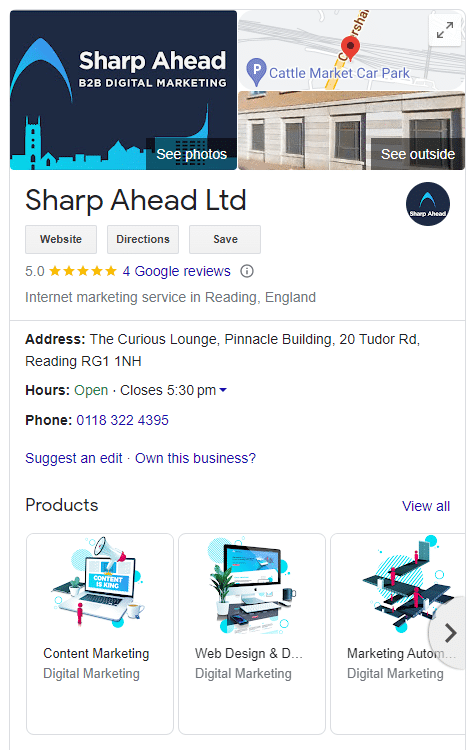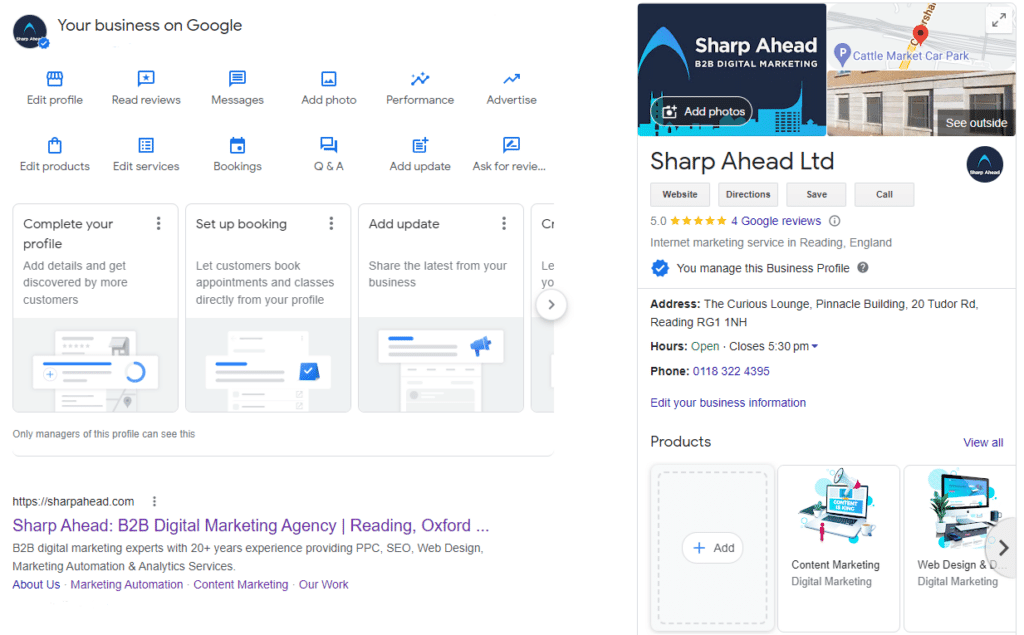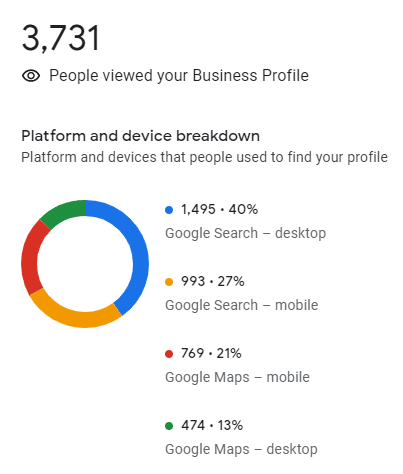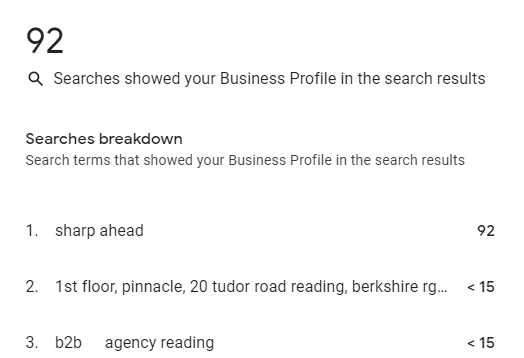Everything B2B Marketers Should Know about LinkedIn Content Creators
How you can transform your C-suite and employees into LinkedIn Content Creators—and why it’s a good idea.
Reading: 0118 322 4395 | Manchester: 0161 706 2414 | Oxford: 01865 479 625 | info@sharpahead.com | Office hours: Monday-Friday 9:00am - 5:30pm
| Office hours: Monday-Friday 8:30am - 5:30pm
| Email | Office hours: Mon-Fri 9:00am - 5:30pm
A change to insights on Google Business Profiles
Subheading
If your company uses a Google Business Profile, you will have experienced many changes to this platform over the last couple of years. And this month Google retires the distinction between branded, direct and discovery searches. Read on to find out why this is important and what you need to do next.

Google Business Profiles (formerly Google My Business listings) are a key tool for organisations. They appear on the right-hand side of the Search Engine Results Page (SERP), and on Google Maps with key business information and CTAs.

This rich set of information makes them an important piece of digital real estate, with the local map often appearing before any other organic listings.
Listings can be created manually or you may find Google has started one for you; they can be populated with user generated content and are often carefully curated by your digital marketing team or agency.
Over the years GBP profiles have become increasingly more engaging with visual features such as photos, videos and product imagery within the listing. Most recently Google has changed how you access and edit key parts of your profile, moving key parts of this functionality within the SERP rather than through the back-end platform.

In addition to this, Google has changed how it categorises the reporting available from your profiles, most notably how it handles user searches.
Up until now Google classified the way users found your business profile into three categories: branded searches, direct searches and discovery searches.
These numbers were a way to gauge not only when your profile was being served, but also the level of brand awareness amongst searchers – which was particularly useful when marketing a physical location such as a coffee shop or coworking space – with the all-important discovery searches indicating how many users found your listing who may not have been aware of your brand.
If you’ve automated any reporting on these metrics through Google’s API (such as Google’s Looker Studio) you’ll need to get these updated and replaced with new metrics.
The performance metrics on Google Business Profiles now fall into two categories – how people found your listing and what action they take from it:


The categorised search types were a great way of analysing the performance of your business profile at a glance. However, the loss of these metrics is balanced by the addition of the search breakdown within GBP – giving digital marketers clarity on what exactly is triggering your GBP profile, which can inform your SEO strategy. Top tip: If you find you’re not ranking for generic search terms consider your description, categories, products and services and…
If you need support with your Google Business Profile or B2B digital marketing strategy, get in touch with us today for a free 30 minute consultation.
How you can transform your C-suite and employees into LinkedIn Content Creators—and why it’s a good idea.
Learn how to build authority and craft AI-ready answers with GEO (Generative Engine Optimization) — a must-know for B2B marketers.
AI is changing the world fast and SEO is no exception. Here’s how to start preparing for AIOs and agentic search now.



B2B Digital Rocket Fuel straight to your inbox
Add your email address below to receive our biweekly newsletter and stay up to date with the latest B2B digital marketing news and insights.
You'll also get instant access to our growing catalogue of marketing resources.
“An invaluable resource for getting the latest and greatest ideas and tips on B2B digital marketing. My students also benefit from the industry insights.”
Louize Clarke, Founder, The Curious Academy
Reading Office
The Curious Lounge,
Pinnacle Building,
20 Tudor Road,
Reading,
RG1 1NH
0118 322 4395
reading@sharpahead.com
Manchester Office
CORE,
Brown Street,
Manchester,
M2 1DH
Oxford Office
Oxford Centre for Innovation,
New Road,
Oxford,
OX1 1BY
01865 479 625
oxford@sharpahead.com
© Sharp Ahead | VAT: 184 8058 77 | Sharp Ahead is a company registered in England and Wales with company number 08971343